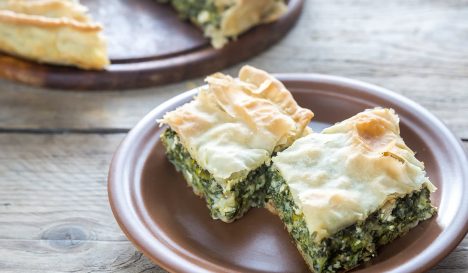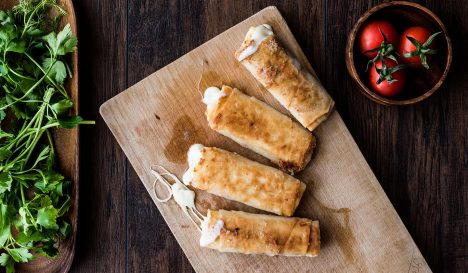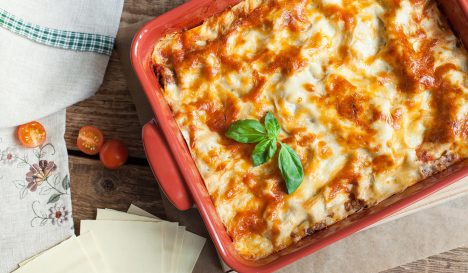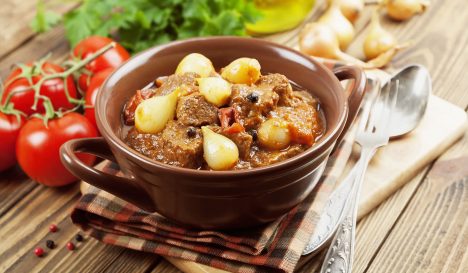Moussaka
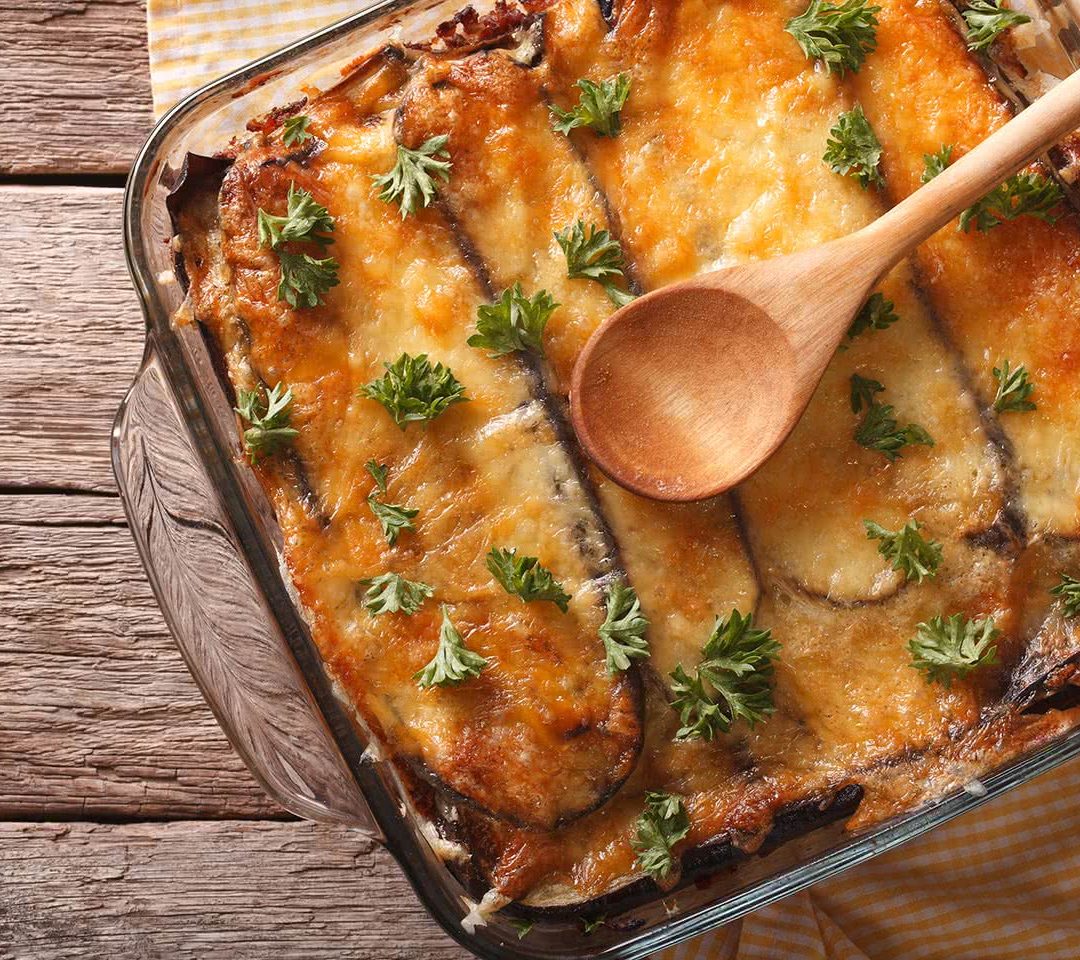
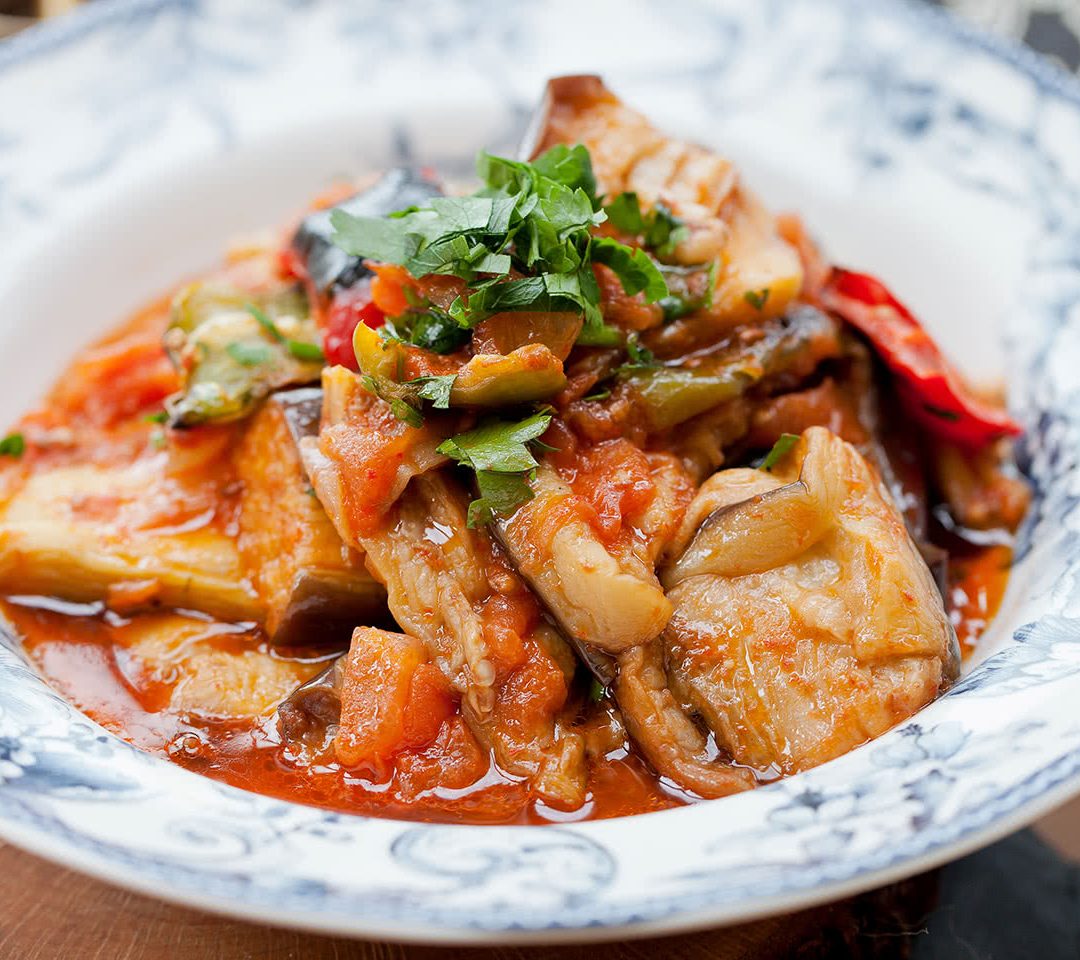
Moussaka
-
Kitchen Greek cuisine
-
Basis Meat / fish
-
Dish type Main course
-
For who Fans of classics
What is moussaka?
When it comes to well-known Greek dishes, moussaka (Greek spelling μουσακάς, pronounce “moes-SAH-kah”) is number one. That is no wonder, as this oven dish with minced meat and soft aubergine under a milky blanket of bechamel sauce is warming, filling and flavourful.
Surprisingly, moussaka is not a completely Greek dish. The name is Arabic (musaqqã ¢) and means “moisten”, which refers to the tomato puree that turns the minced meat mixture into a creamy sauce. It is eaten in many regional variants in countries such as Turkey, Egypt and Romania. Yet it reminds us of white churches depicted against an azure blue sea and island-hopping holidays.
It is believed that the dish as we know it is only around a hundred years old. It appears in a cookbook written by the influential chef Tselementes, who tried to “westernise” Greek cuisine, entirely according to the taste of Athenian elite at the time. Tselementes devoted an entire chapter to moussaka. The book has become so defining for Greek cuisine that today the word “tselementes” means “cookbook.”
Did you know...
Greeks also like to eat a vegetarian version of moussaka, especially in the summer months. They call this dish pseudo-moussaka.
How to make moussaka
First, the individual parts, which are assembled together in the baking dish, are prepared separately: a meat sauce, slices of aubergine and a bechamel sauce. A layer of boiled potato slices is not traditionally necessary but is sometimes added in Canada to complete the dish – potatoes, vegetables and meat in one.
For the minced meat sauce, usually lamb or beef is used, although there are Greek chefs who prefer minced veal. Additions such as cinnamon, oregano or parsley make every moussaka a slightly different experience. Red wine provides extra depth and tomato puree is a must – the dish owes its name to it.
The aubergine can be baked in the pan or oven. Anyway this vegetable needs time, love and a lot of oil to become nice and soft. As aubergine acts like a sponge when it comes to absorbing oil, it is a challenge for the cook to make a moussaka that does not drip with oil on the table.
The simple bechamel sauce is pimped up by some chefs with generous amounts of nutmeg, eggs for an extra thick, airy top layer, or even yoghurt.
Then all parts are placed in a baking dish: aubergine, then minced meat, then more aubergine, and finally the bechamel with cheese over it. The dish goes into the oven and is baked until the top is brown.
How to eat
Just like a good steak, a moussaka needs time to rest so leave it for fifteen minutes or even half an hour before you eat it. The flavours are then able to come into their own and the layers do not collapse when you put your knife in it.
Please consider
Italians serve their own oven dish made with aubergine, the melanzane parmigiana. Spanakopita is another vegetarian Greek oven dish.

